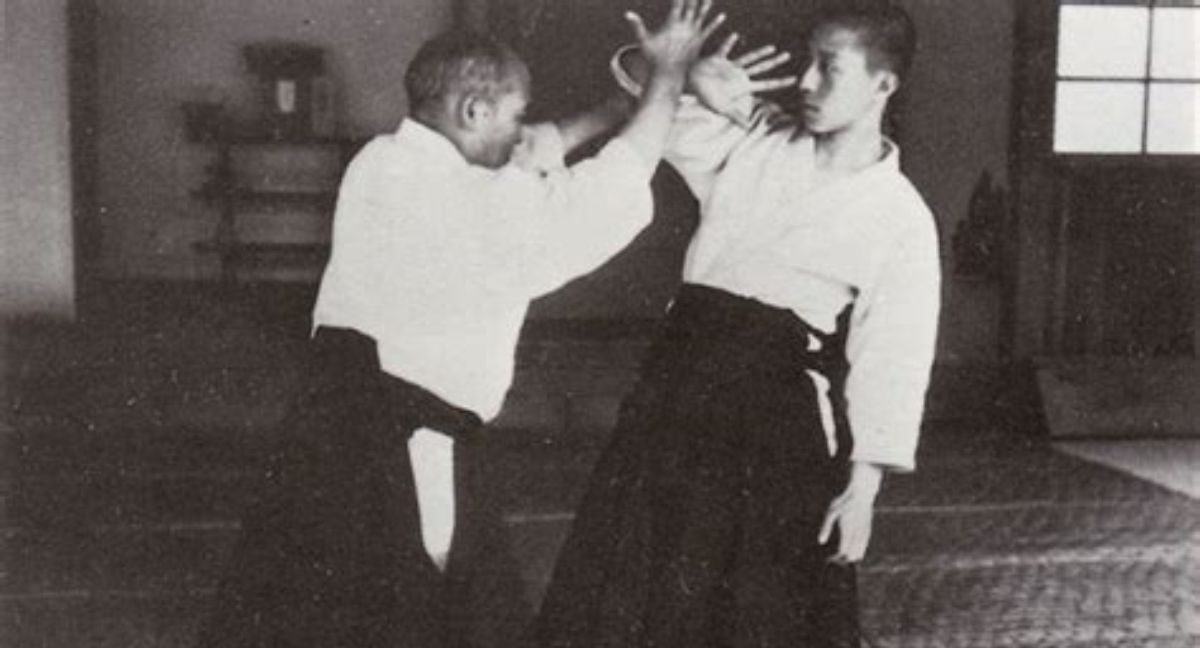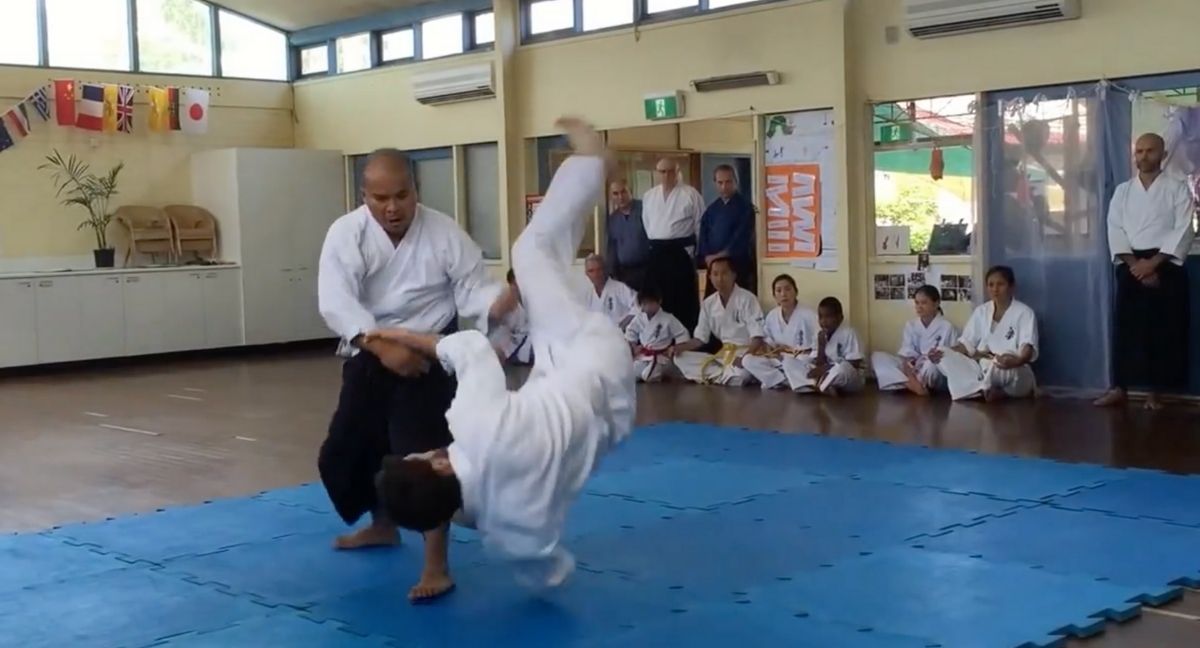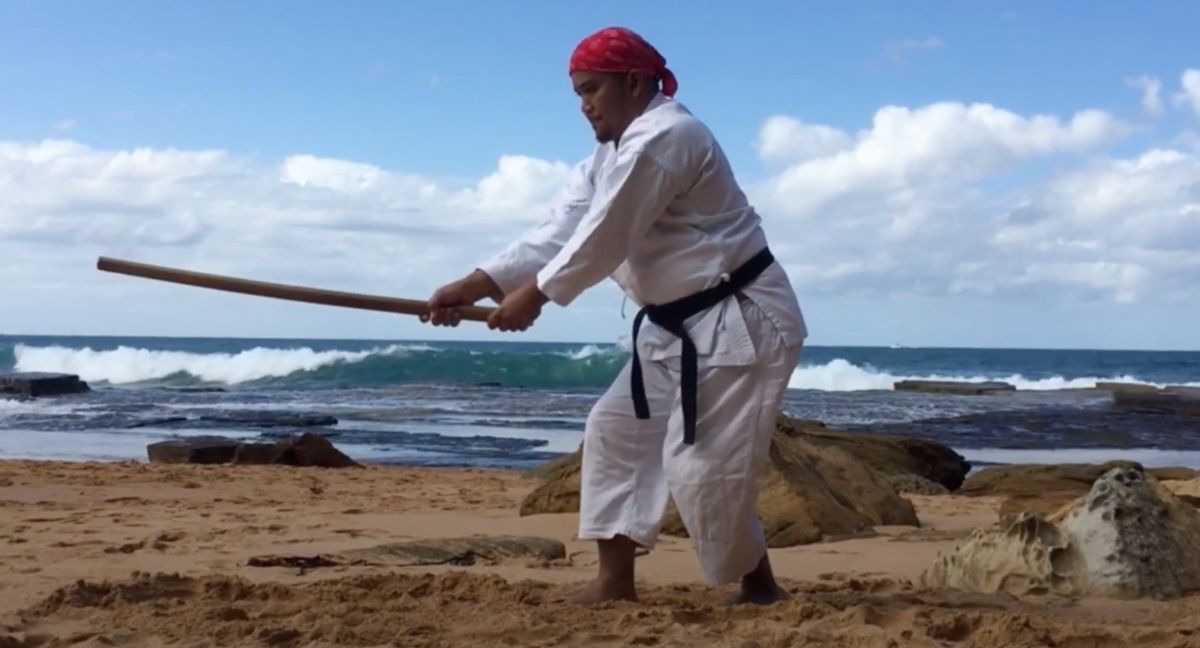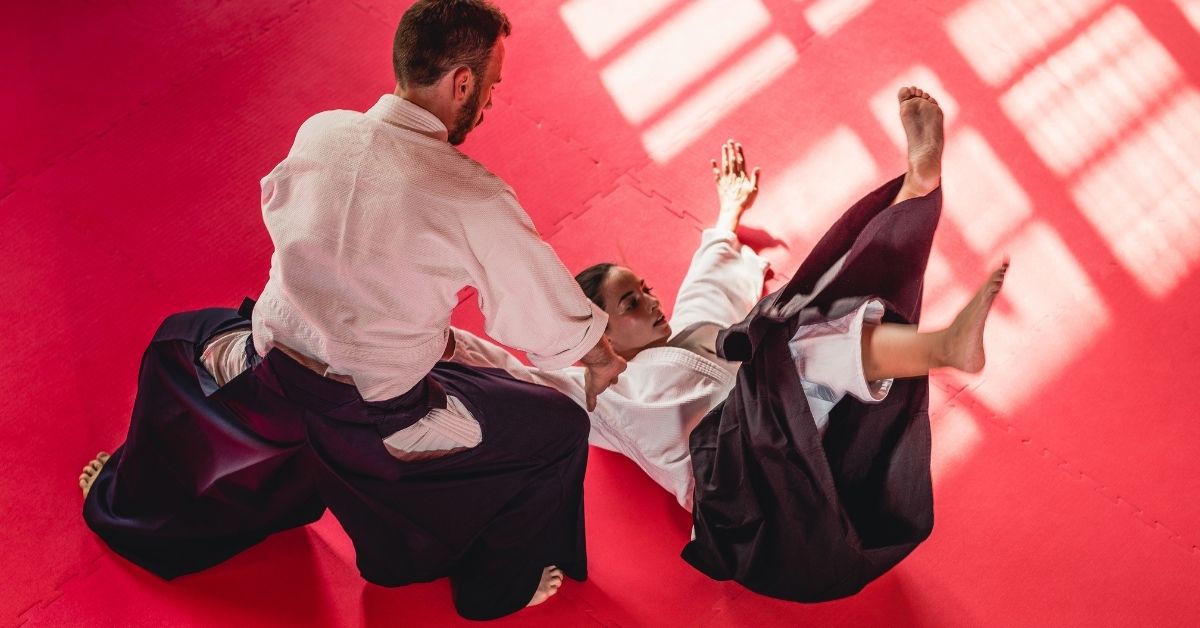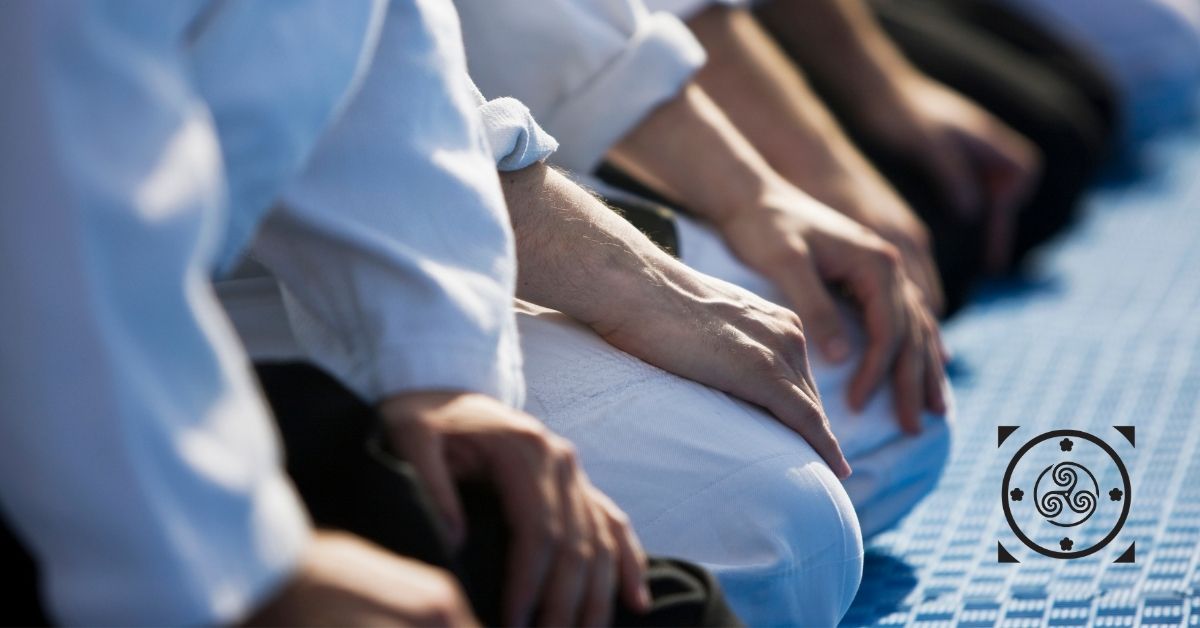The 7 Ken Suburi of Aikido
The 7 Ken Suburi is the building block of Aiki Ken (Aikiken), the sword curriculum of Aikido’s Bukiwaza. Suburi (素振り:すぶり) means “practice-swinging”, is used to refer to the basic solo movements of Aikiken.
The ken suburi is a series of very detailed movements. YES, you have to get all the details correct. This is suburi. These are drills to develop muscle memory, coordination, breathing, and timing. The Ken suburi and Jo suburi will eventually influence or even dictate your footwork, stance, and form in Taijutsu.
Make sure that you know how to do the 7 Ken Suburi before you move on to the 5 Kumi Tachi.
How To Do the 7 Aikiken Suburi in Aikido
Ichi No Suburi
Start with the right foot forward on Ken Kamai (Sword Stance). Raise the sword whilst inhaling, lifting the front right foot slightly (about the length of the foot). Cut downward vertical cut – Shomen Uchi. Let the sword cut. Do not chop. The sword cut stops parallel to the ground at the same as the back foot lands to stabilise the stance (hanmi). Make sure the right-hand index knuckle is up on top of the sword handle. Exhale – Kiai.
Ni No Suburi
Start with the right foot forward on Ken Kamai (Sword Stance). Raise the sword whilst inhaling. Step back into jōdan-no-kamae (high stance). This point is also known in Medieval terms as “Posta di Falcone’ (The Post or Guard of the Falcon). Your right wrist is on top of your head and your left-hand grip on the sword is on your forehead.
With elbows in, cut downward, and step forward from your back right foot. Which means your right back foot becomes your front foot again. Although Ichi No Suburi is the only one that has a 100% Shomen Uchi cut, do your best to do one here too. Land on the ball of your right foot and not your heel. The sword cut stops parallel to the ground. The right-hand index knuckle is up on top of the sword handle. Exhale – Kiai.
San No Suburi
Start with the right foot forward on Ken Kamai (Sword Stance). Step back into jōdan-no-kamae (high stance). Raise the sword as high as possible on top of your head. The visualisation is you are reaching out to the heavens and connecting to the great spirit whilst inhaling its Ki.
When the sword passes your axis, start moving your sword back to hide it behind, whilst inhaling more ki. When your sword is behind, compress your ki in your hara and lower your stance.
With the explosive power of your breath, step forward with your back (right) foot, and exhale cut. Do your best to do Shomen Uchi cut. This is a long cut.
Let the sword cut. Do not chop. The sword cut stops parallel to the ground at the same as the back foot lands to stabilise the stance (hanmi). Make sure the right-hand index knuckle is up on top of the sword handle. Exhale – Kiai.
San No Suburi is a meditative suburi. It is the first move to Ki Musubi No Tachi.
Yon No Suburi
Start with the right foot forward on Ken Kamai (Sword Stance). Raise the sword whilst inhaling, lifting the front right foot slightly (about the length of the foot). Cut downward vertical cut – Shomen Uchi. Let the sword cut. Do not chop. The sword cut stops parallel to the ground at the same as the back foot lands to stabilise the stance (hanmi). Make sure the right-hand index knuckle is up on top of the sword handle. Exhale – Kiai.
Next, with your left back foot, step forward, and inhale whilst raising your sword. Cut down and exhale. When you finish your cut, correct your balance with the right foot as the back foot.
Repeat the process. It should look like you are walking and cutting at the same time.
Remember to inhale when raising the sword and exhale (Kiai) when cutting.
Go No Suburi
Step forward while guarding, then a 70-degree downward cut; repeat.
Roku No Suburi
Start with the right foot forward on Ken Kamai (Sword Stance). Raise the sword whilst inhaling. Step back into jōdan-no-kamae (high stance) – Ni No Suburi.
Step forward with a downward vertical cut (shomen), then step forward and thrust (tsuki). Finish the stance on a Hitoemi Kamae.
Then do Go No Suburi and finish your cut with hanmi. Lift your front foot and thrust (tsuki). Finish the stance on a Hitoemi Kamae.
Repeat the process.
Shichi No Suburi
Step forward while guarding, then a 70-degree downward cut, then step forward and thrust.
Click HERE and Book Your FREE TRIAL Class
Ken Suburi by Morihiro Saito Sensei
Ken Suburi by Hitohira Saito Sensei
Ken Suburi by Crom Salvatera Sensei
Click HERE and Book Your FREE TRIAL Class
Footwork Drawing by Hitohira Saito Sensei posted at Tanrenkan Iwama
Here is the footwork drawing by Hitohira Saito Sensei posted at the Tanrenkan Iwama Dojo.
Some Things to Remember When Doing Ken Suburi
- Do both ken suburi and jo suburi regularly. If possible, every day.
- If possible training ken suburi around nature. You will be breathing ki deeply and heavily, and a lot during the suburi. Use nature to charge you up.
- When training Ken Suburi indoors, make sure you are aware of your surroundings such as furniture, ceiling, walls, people, and especially children.
- Be strict with your footwork.
- Lift your feet when stepping. Do not slide your feet when stepping. The only time is sliding your feet when stepping works is when you are on good vinyl mats. When you are on tatami it will scrape the skin on the soles of your feet if you slide. When training outside you will trip on rocks, sticks, or uneven surfaces if you do not pick up your feet when training.
- Do NOT mix the ken suburi and jo suburi footwork, stance, and purpose. Remember ken suburi is designed for the sword cuts, Jo suburi is designed for the Jo staff and the spear.
- When thrusting (Tsuki) be in Hitoemi. When cutting be in Hanmi. Hanmi means “half”.
- When raising the sword inhale. When cutting or thrusting exhale Kiai.
Subscribe To My Newsletter
BE NOTIFIED ABOUT BOOK SIGNING TOUR DATES
Donec fringilla nunc eu turpis dignissim, at euismod sapien tincidunt.


